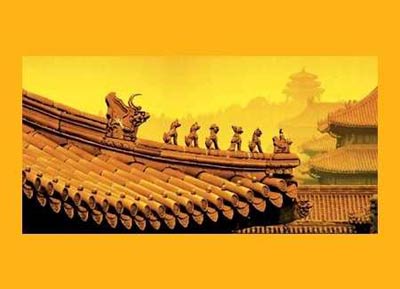OLYMPICS /
Cultural Olympics
Colors of Beijing 2008:The Glaze Yellow
Updated: 2008-08-07 14:18
With golden glazed tiles, golden leaves and golden farmlands, the peculiar golden color of the glaze represents the glorious history and landscape of Beijing.

|
Yellow color was worshiped in ancient China, and it was often deemed to be symbol of regality. Such customs firstly originated from the thought of land worship by the ancient agricultural people. According to Chinese Yin-Yang theory, yellow color was referred to earth in the five elements; and such earth, as a kind of central earth in the center of the universe, was put in the middle of the five elements, showing earth is respected. Later on such idea, combined with the thought of great unification of Confucianism, believed that the united royal family with the Han nationality as main body was such an empire in the position of central earth, different from the surrounding other foreign countries. Thus, yellow was associated with legitimacy and homage through connection of earth, providing a rational reasoning for the emperor's ruling.
Apart from this, there was an old saying in ancient China, “When dragons fight, the blood they bled was yellow, and also, dragons were regarded as symbol of emperors.” In this way, yellow color had a direct connection with emperors. Consequently, yellow came to indicate that power of throne was given by the God, thus making it holy and unable to be infringed. In the Zhou Dynasty (11th century-256 BC), yellow battle-axe stood for power of Son of Heaven. Since the Sui Dynasty (581-618), emperors dressed in yellow dragon robes. Yellow color became a color exclusively used by emperors.